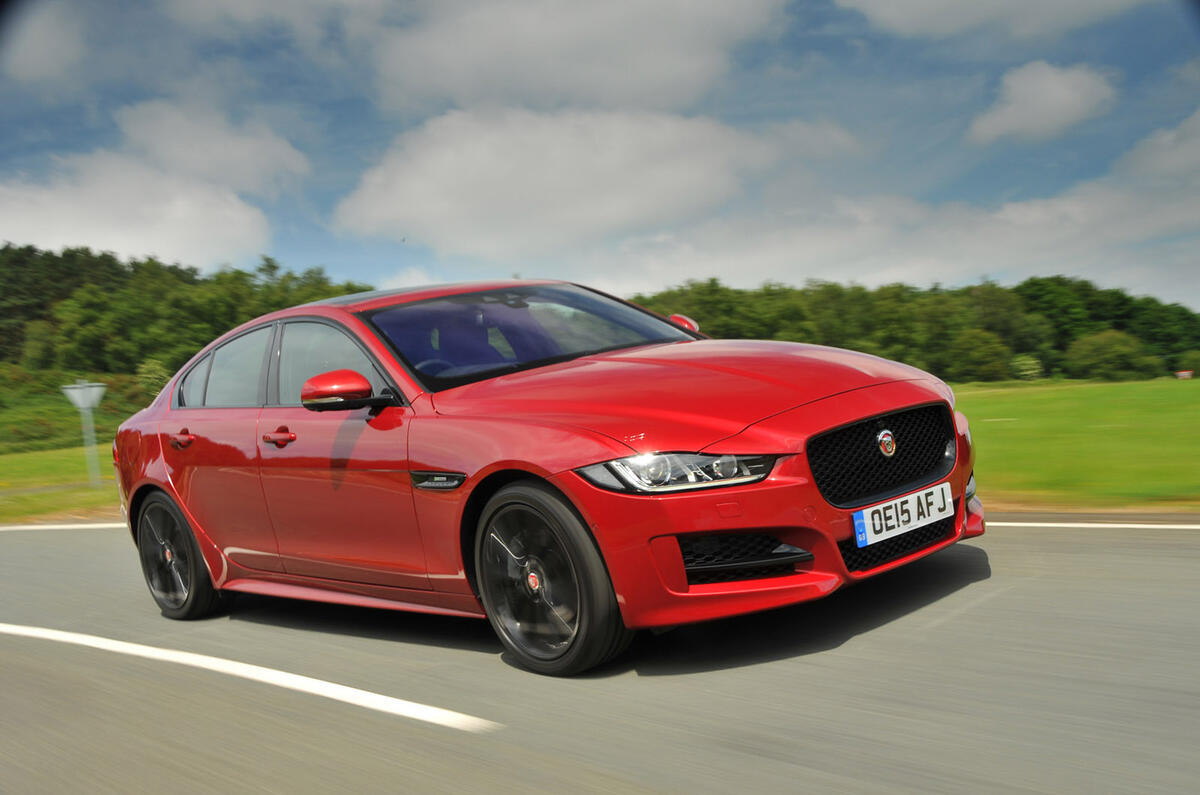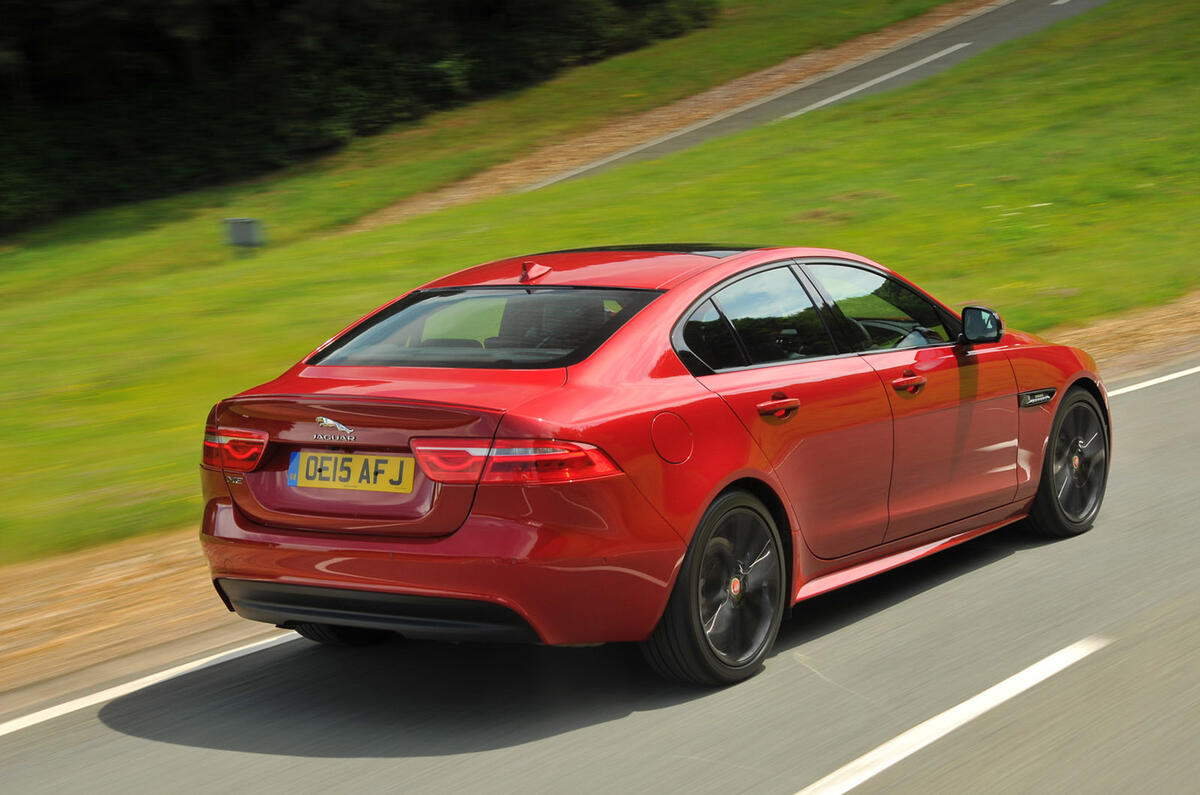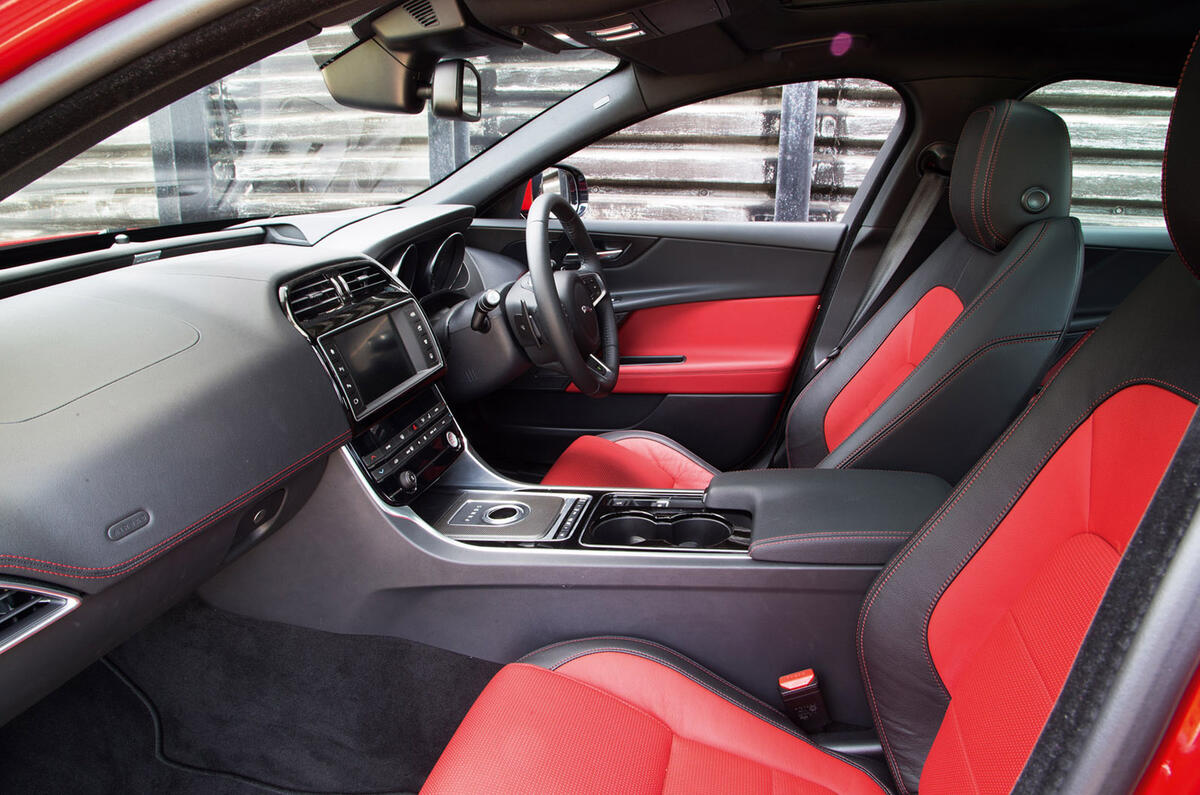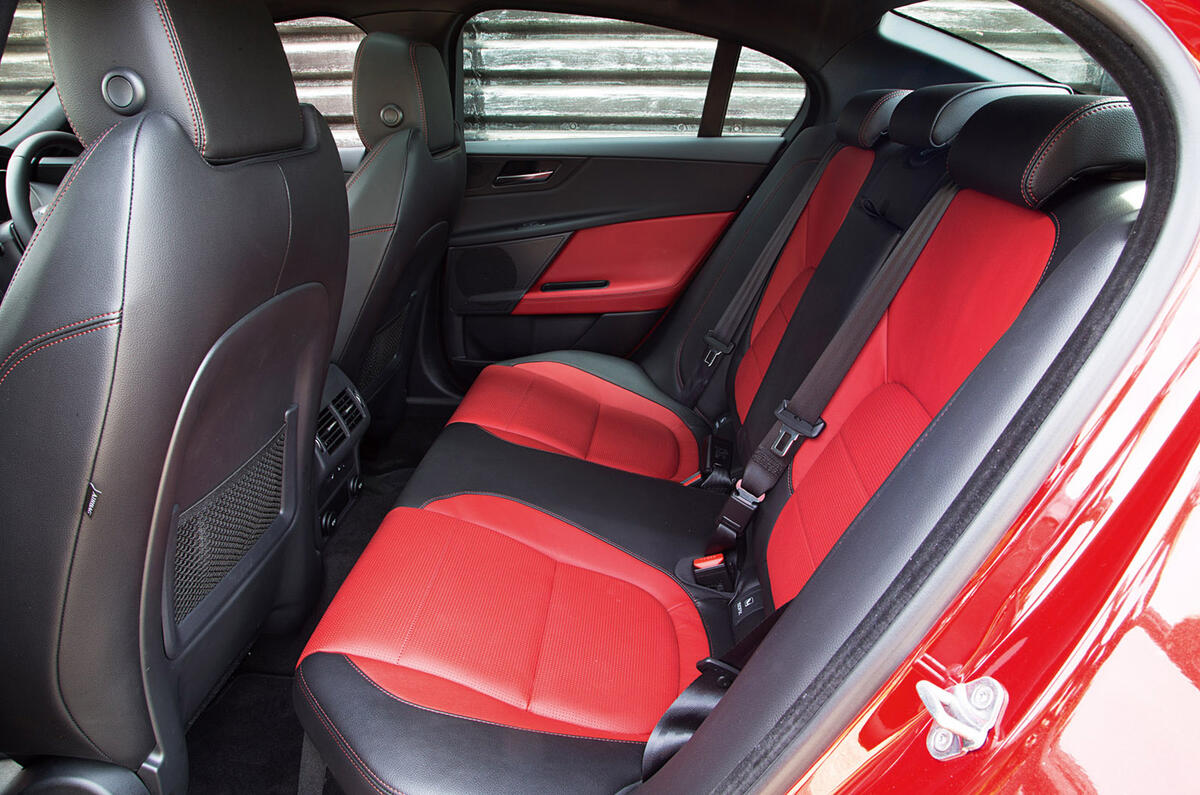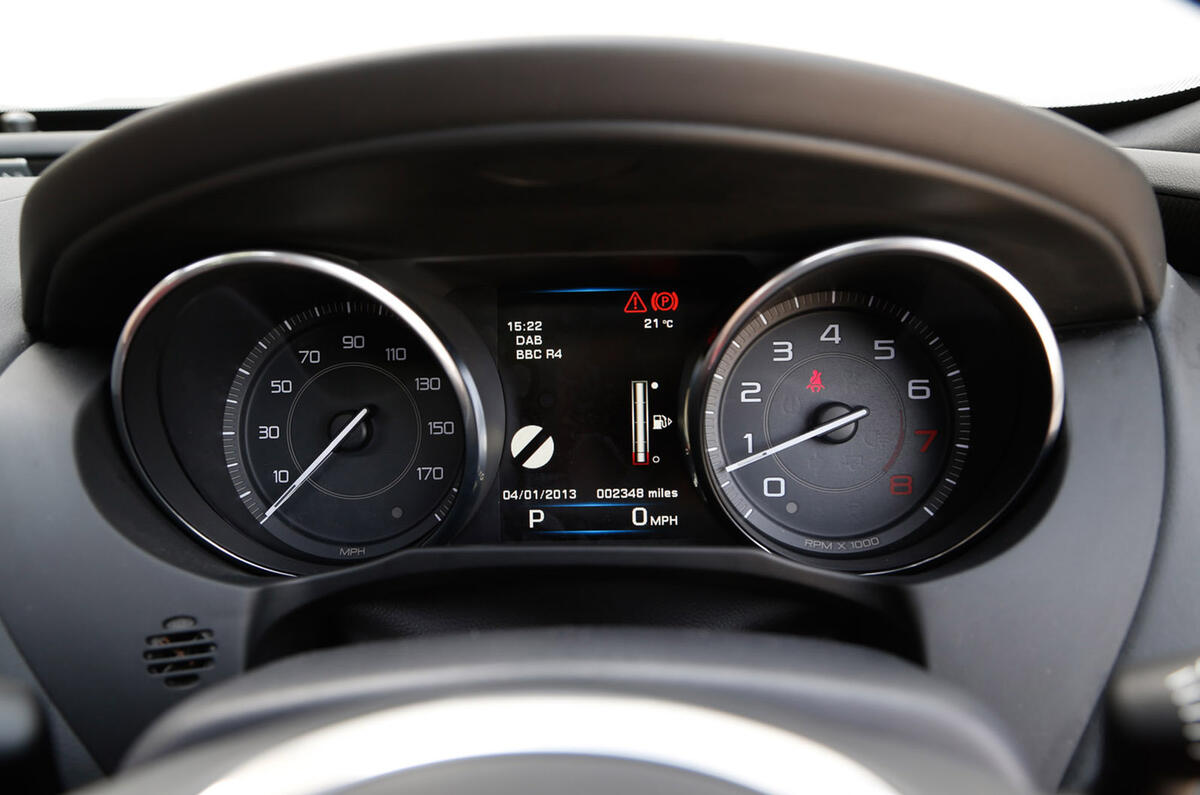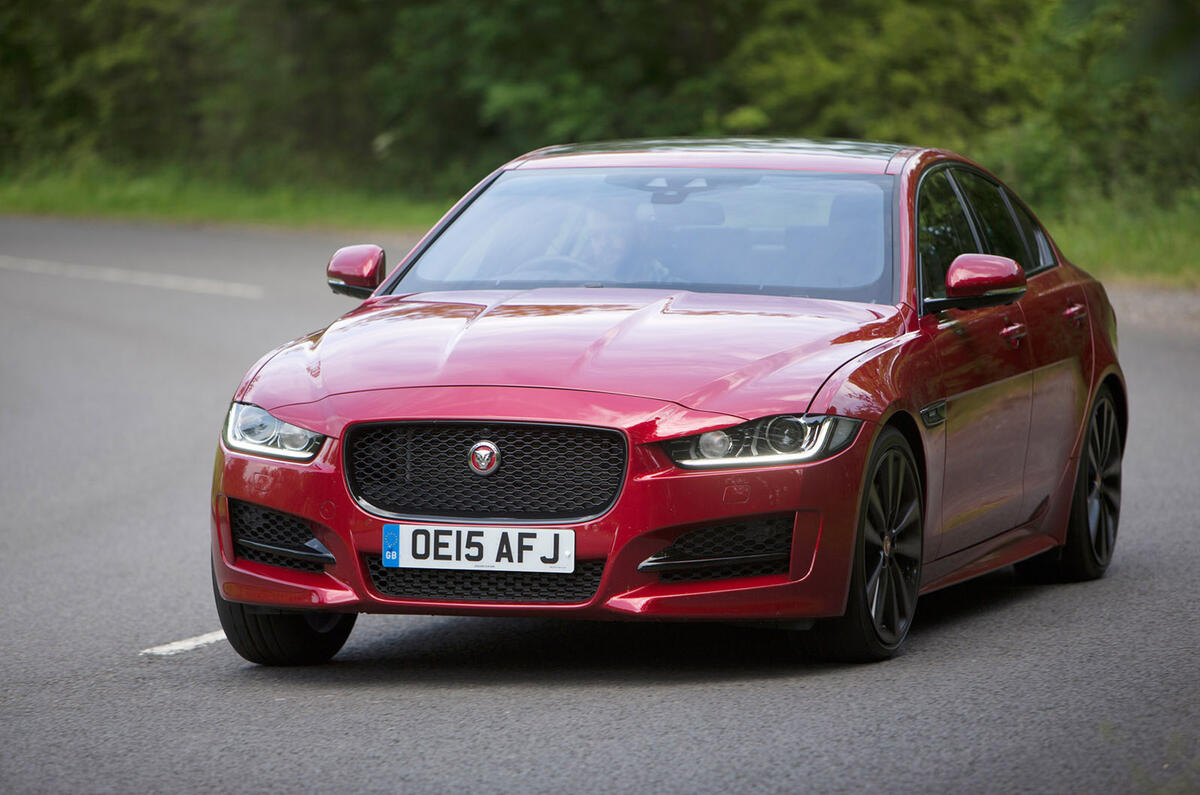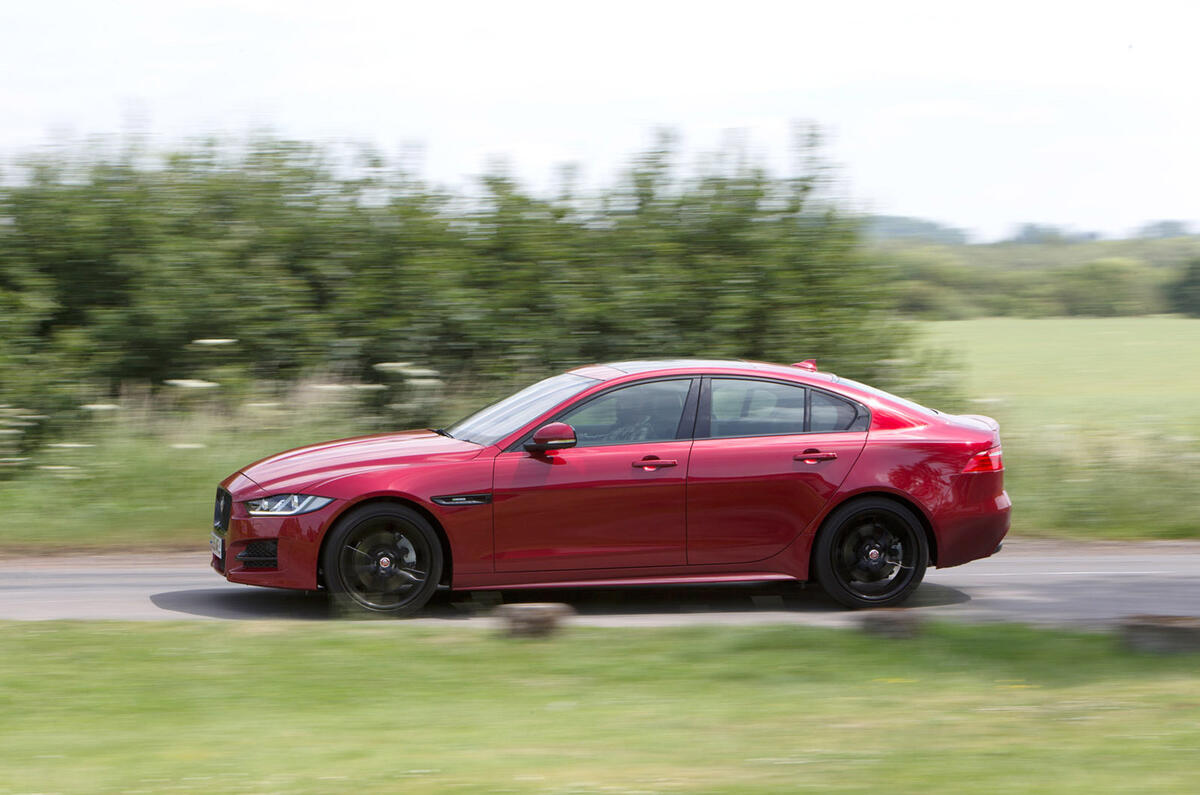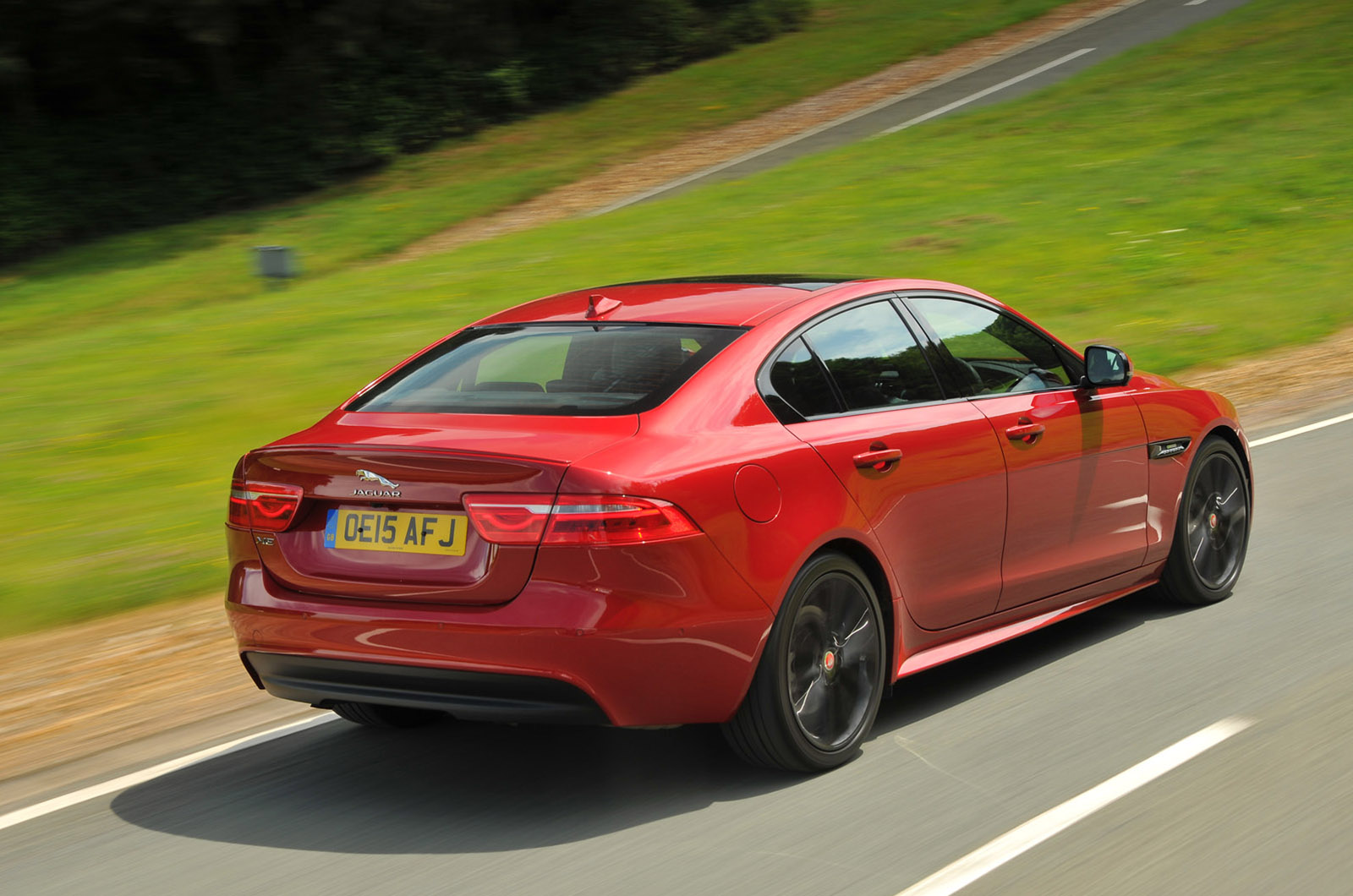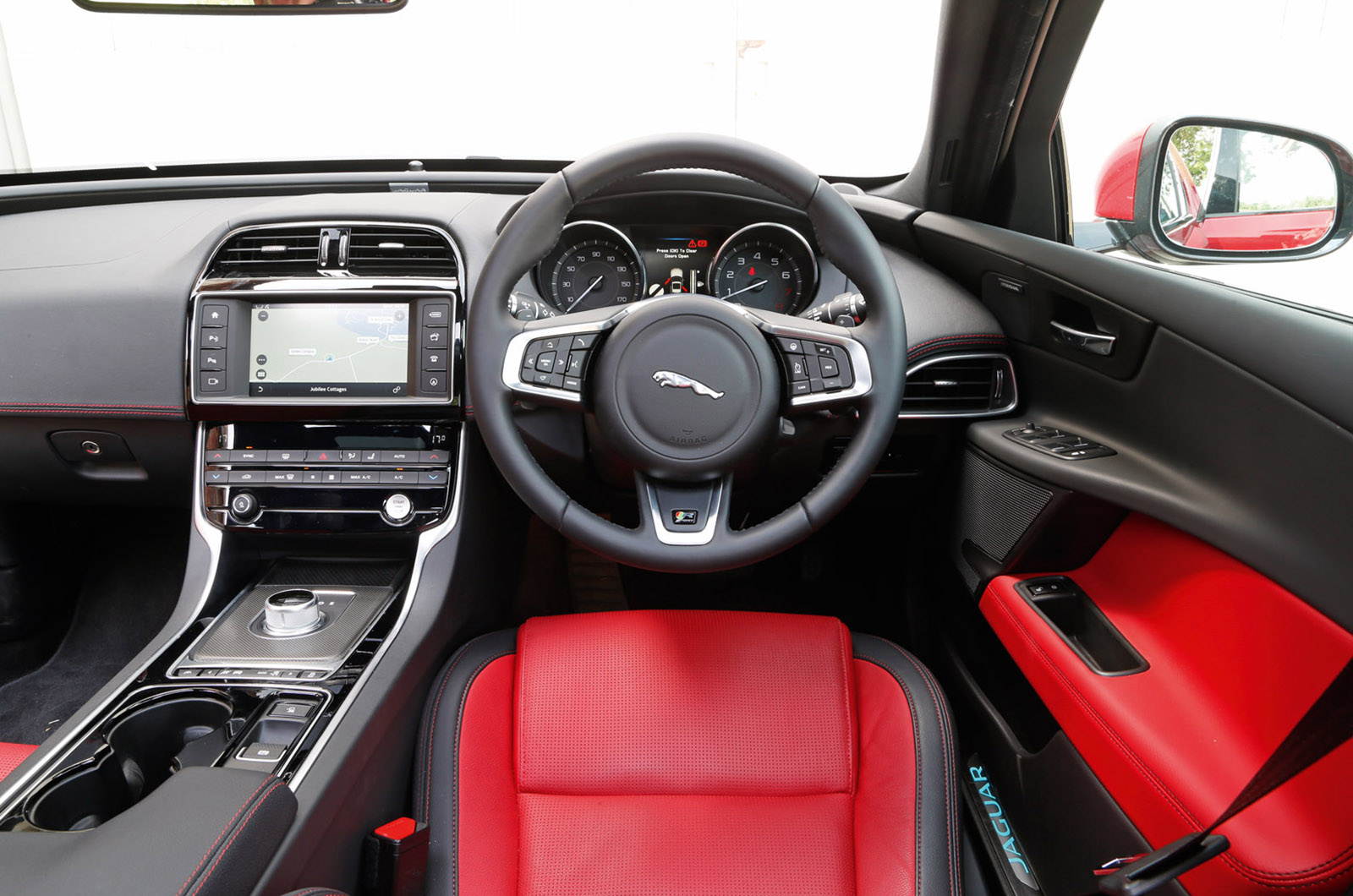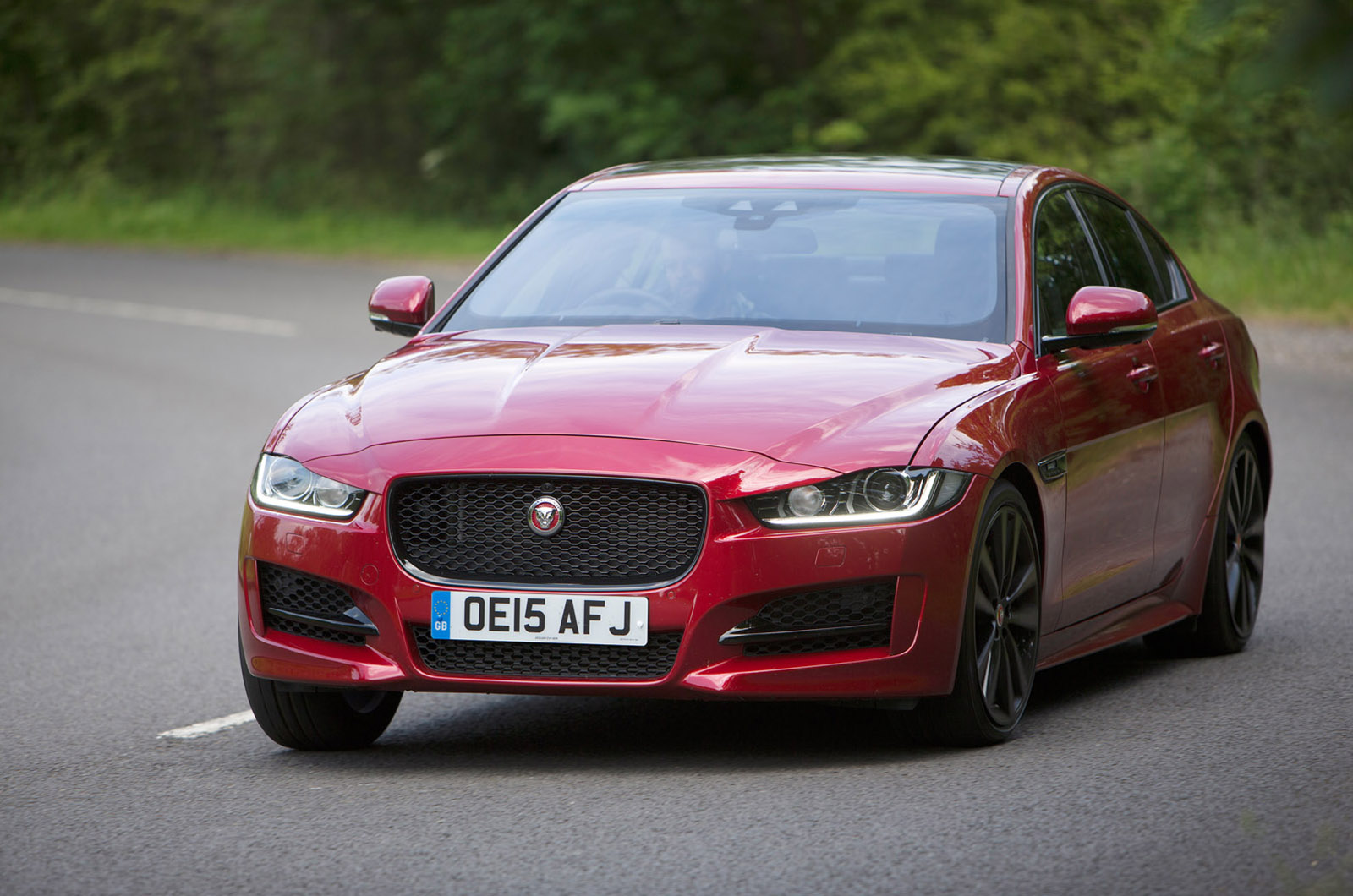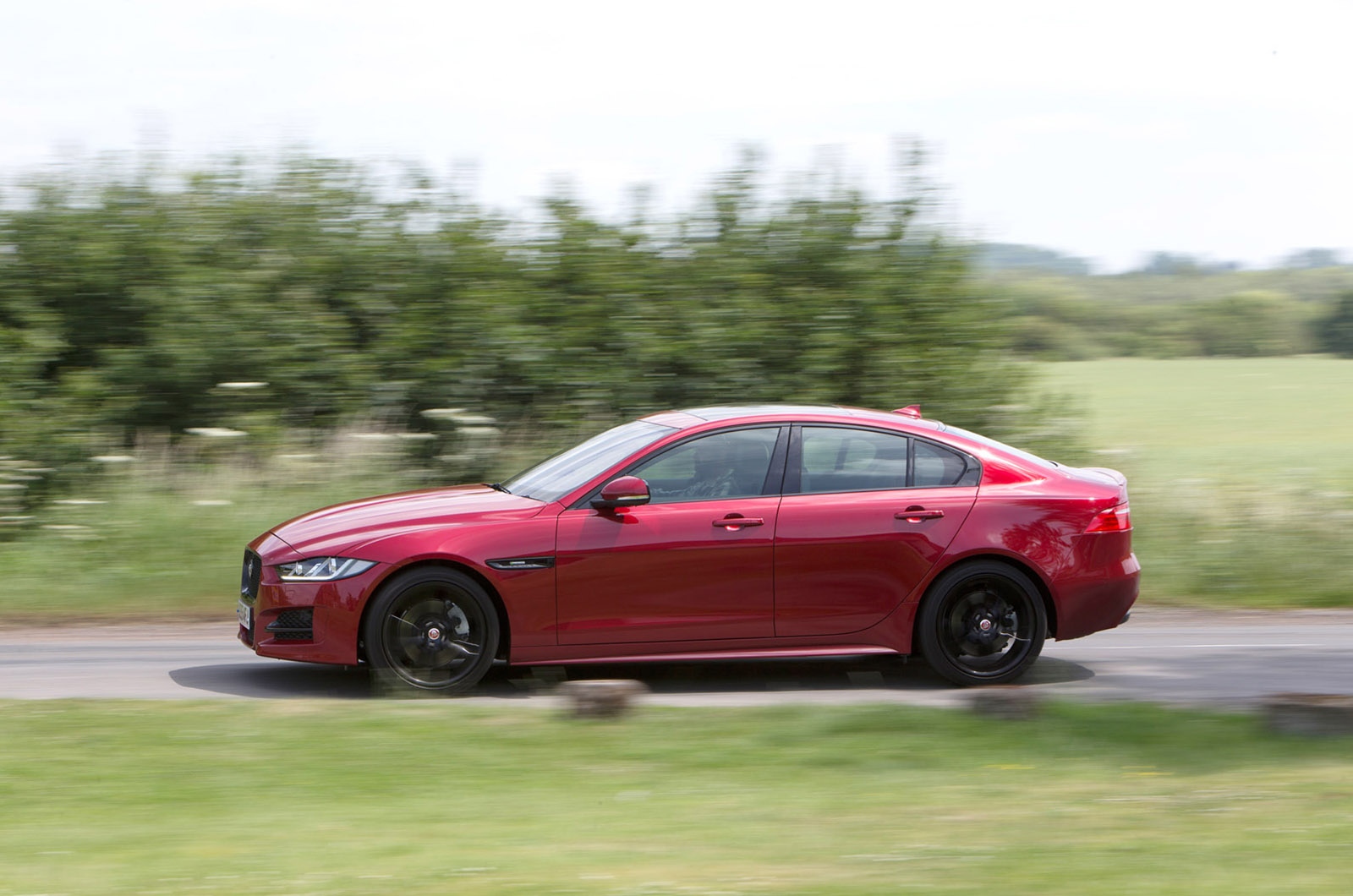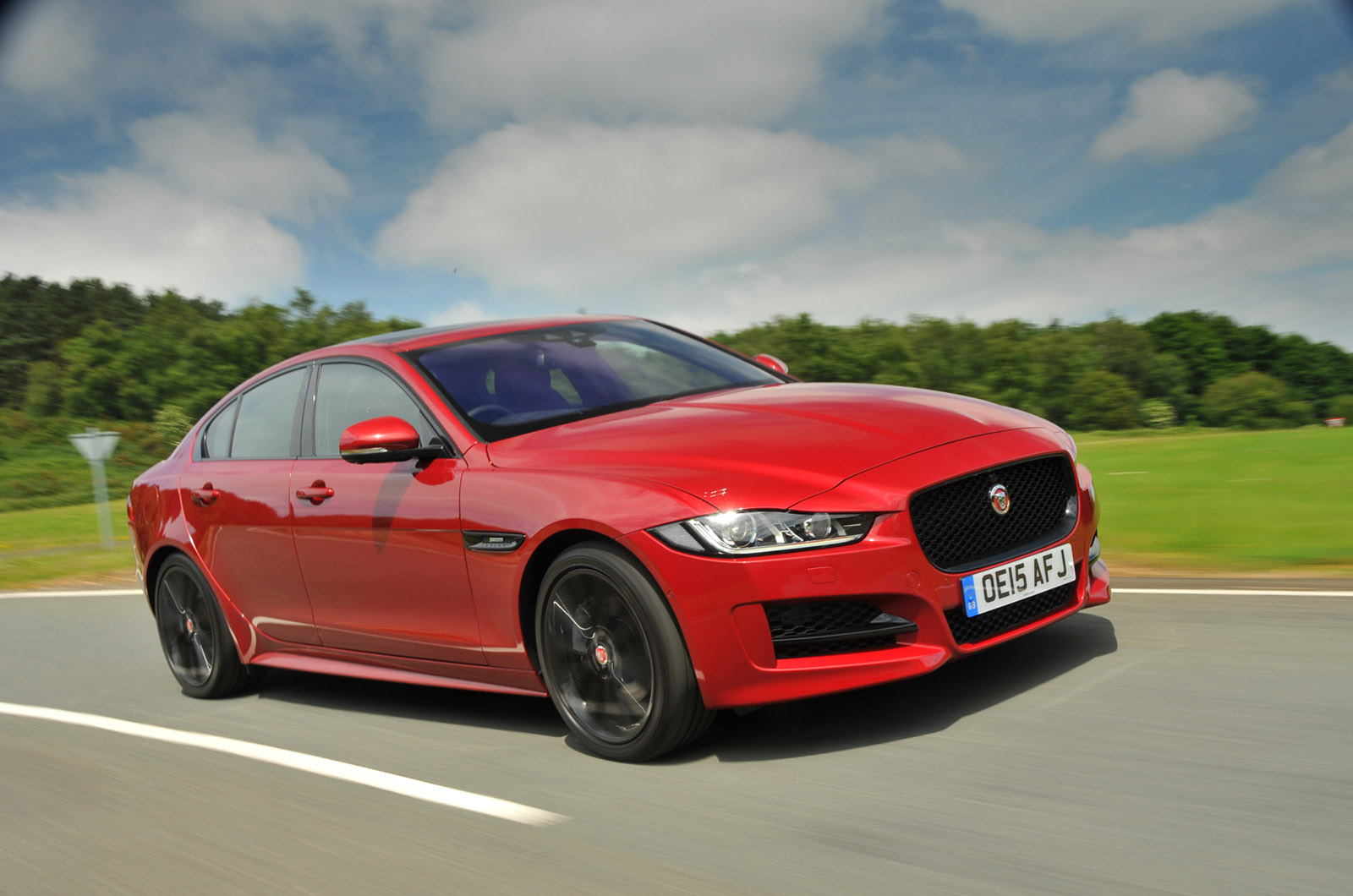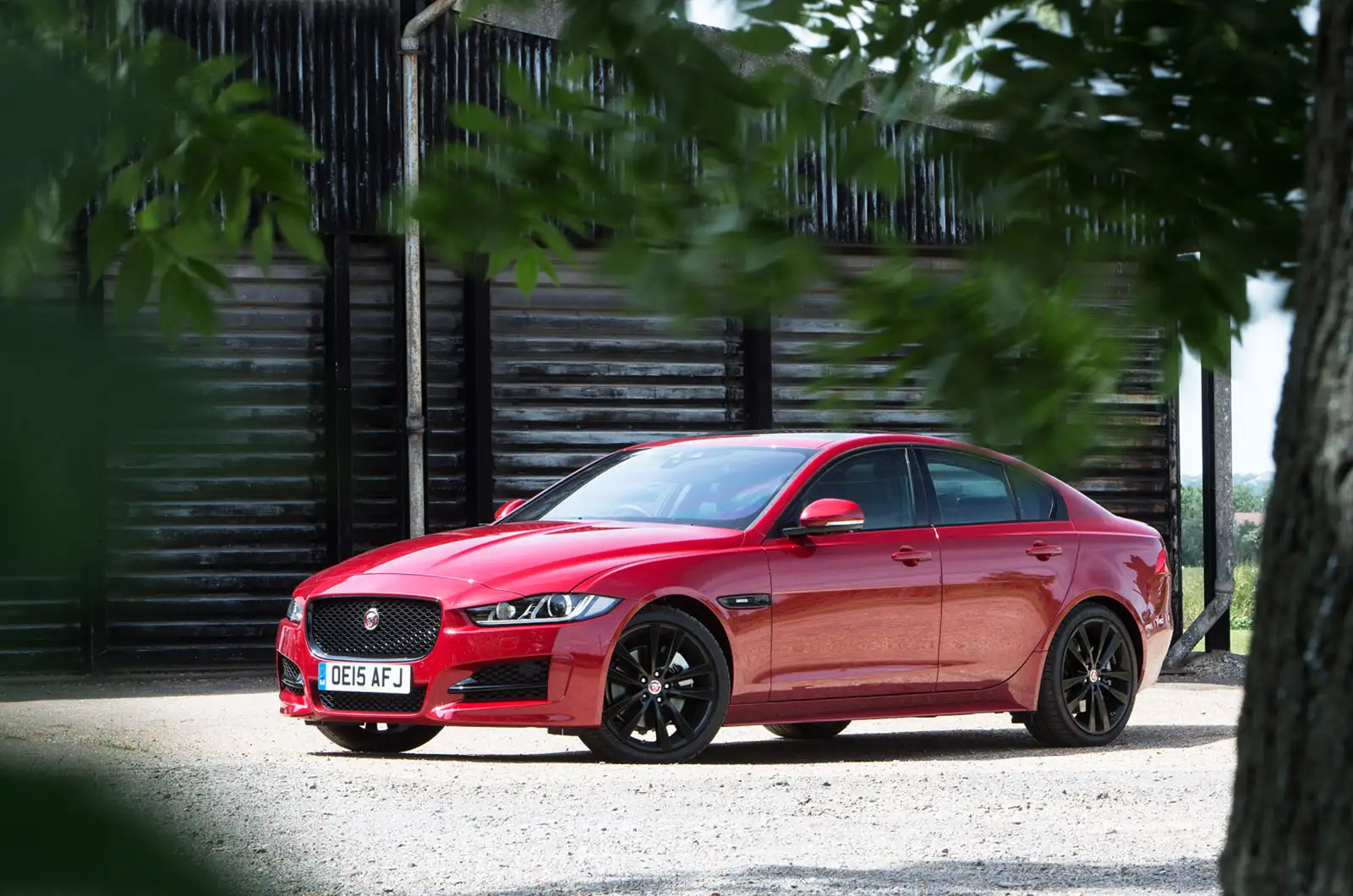The general industry-wide shift towards making cleaner, less cluttered interiors is mirrored in the new Jaguar XE, whose dashboard is dominated by a central touchscreen.
Around it, there are eight buttons that are mostly first-tier menu shortcuts, and there are just two discreet rows of push-buttons below the screen. All are very straightforward and logical, too – you can control the temperature without having to bother the touchscreen, for example – if lacking in outright character and flair.
Colours are reserved – at least on R-Sport models, although less overtly ‘sporting’ trim levels can move away from black – and there aren’t detail touches like the slow-rotating air vents or electrically buttoned glovebox opening of the early XFs. That’s probably sensible when you work out the cost of fitting them compared with the number of people for whom it’s a deal-breaker. The ‘surprise and delight’ will come elsewhere, Jaguar hopes.
But what’s in place is good. It feels respectably well assembled, the perceived quality of materials is fairly high and things are laid out logically. The gentle twist and rise of the automatic gear selector is, to be fair, still a neat touch and, coupled with an electronic handbrake switch, makes plenty of room in the centre of the transmission tunnel for an armrest, two large cupholders and an array of switches to adjust the drive modes. More on those later.
The driving position is also sound. Standard R-Sport cars get eight-way adjustable seats. There are 10-way (fitted to our test car) and 14-way adjustable options, too. However, all give the same net effect: a seating position notable for the fact that you become quickly unaware of it. The seats are comfortable and supportive, the wheel brought easily into reach and the dials clear.
Things are not quite so impressive in the rear of the cabin, where the seats have a smidgen less room than the leading cars in this class. It’s only a centimetre or two here and there, you might argue, and in a bench usually only occupied by children anyway. Fair point.
As a £420 option, the rear seatbacks can split 40/20/40 to augment a 455-litre boot – again, smaller than the class norm but not by a substantial margin. Both the BMW 3 Series and Mercedes-Benz C-Class, for example, have 480 litres of boot space with the seats up.
There are five trim levels to choose from, however the S trim is only available with the 3.0-litre V6 petrol engine. Those looking for a smaller capacity engine will have to make do with the other four trim levels, which are all well-equipped making it a competitive package in a congested segment. The range is split into two - Luxury (SE, Prestige and Portfolio) and Sport (R-Sport and S)
An XE with the entry-level SE trim will see the car fitted with 17in alloy wheels, electrically adjustable front seats, cruise control, dual-zone climate control, autonomous emergency braking, traffic sign recognition, lane departure warning and Jaguar's 8.0in touchscreen infotainment system complete with sat nav, Bluetooth, DAB radio and smartphone integration.
The mid-range Prestige gets heated front seats, leather upholstery ambient interior lighting and numerous chrome touches, while those looking for a little more luxury are well catered for with the Portfolio XE, as it includes Windsor leather seats, 18in alloy wheels, bi-xenon headlights, a full chrome grille and a Meridian sound system.
Those pining for a sportier XE can opt for the R-Sport trim (BMW's M-Sport equivalent) which gets all the goodies fitted to the Prestige equipped XE plus 18in alloy wheels, sports suspension, an aggressive bodykit and bi-xenon headlights including Jaguar's signature 'J' Blade day-running lights. Opt for the full fat XE S and not only do you get the fabulous supercharged 3.0-litre V6 petrol in the nose, but also 19in alloy wheels, adaptive dampers, an even more aggressive bodykit, keyless entry, a 380W Meridian audio system, a powered bootlid and red brake calipers.


